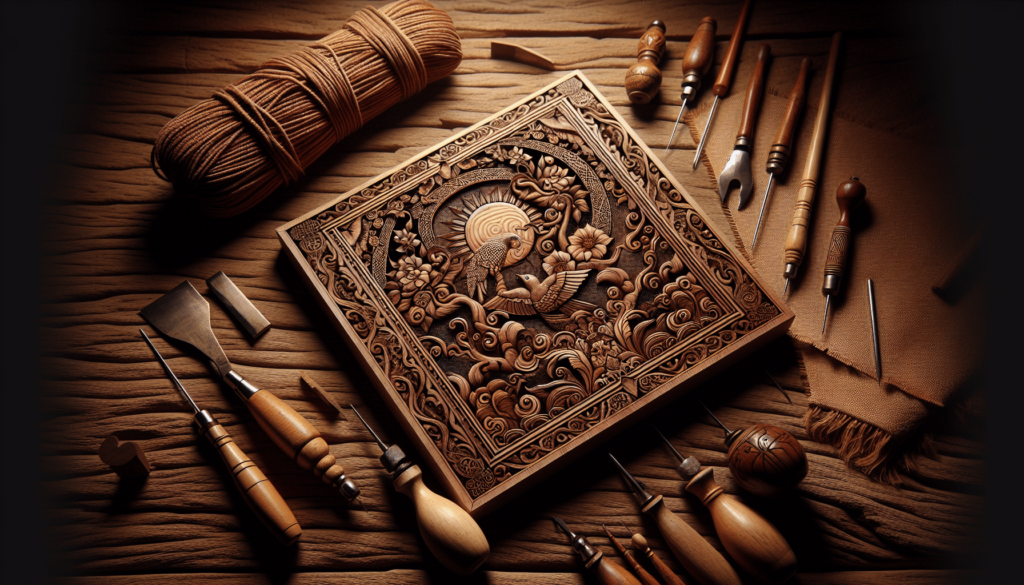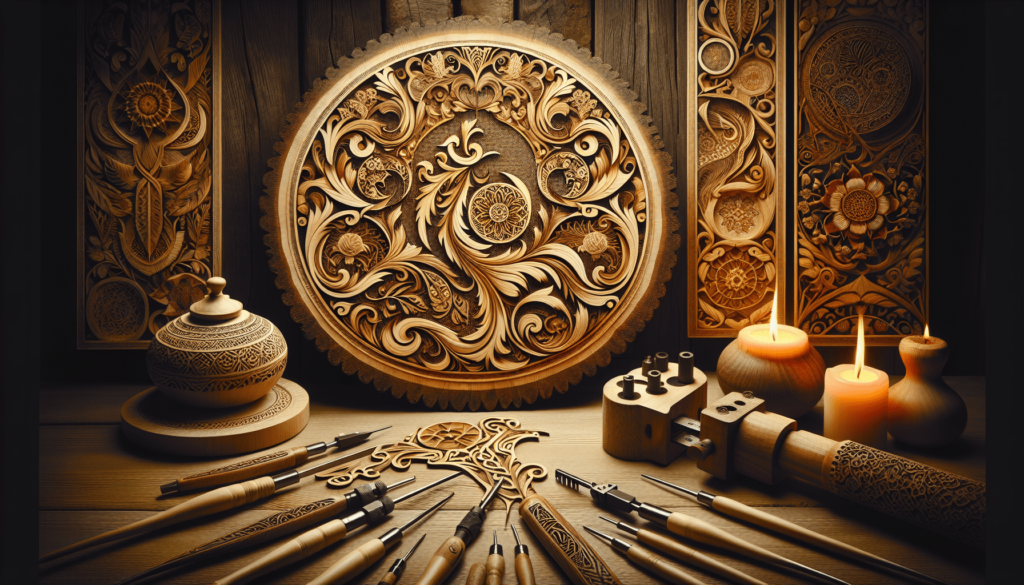Wood burning, which is more technically referred to as pyrography, has been a cherished art form for centuries. In essence, it involves using a heated tool to create intricate designs, patterns, and even pictures on the surface of the wood. The name itself comes from the Greek words “pur” (fire) and “graphos” (writing) – a fitting description for the process of writing or drawing with fire. My fascination with pyrography lies in its rustic elegance and the warm, earthy tones it produces, making each piece uniquely beautiful. Have you ever wondered what wood burning is called? You know, that fascinating art form where artists transform pieces of wood into stunning designs and intricate patterns using nothing but a heated tool? I was curious about that too. Turns out, there’s a real name for this beautiful craft, and it’s “pyrography.”
The Art of Pyrography: A Closer Look
So what exactly is pyrography? The word itself comes from the Greek words “pur,” meaning fire, and “graphos,” meaning writing—essentially, it’s writing with fire. I mean, how cool is that? It’s been around for ages and has seen various incarnations through different cultures and time periods.
Historical Background
You might think pyrography is a modern craft given today’s technology, but oh no, it’s far from being a new kid on the block. People have been playing with fire for artistic reasons for centuries. Ancient Egyptians and Africans were already using early forms of wood burning, albeit with rudimentary tools. They didn’t have those fancy electric pyrography pens we have today, but they did a pretty good job with hot pokers and sticks.
Cultural Perspectives
Pyrography has permeated different cultures and has distinct styles in various parts of the world. In Australia, Indigenous communities have used it for ages to decorate wooden tools and ceremonial objects. In Japan, the art of yakisugi (burning cedar wood to preserve it) shows a utilitarian use that’s also rich in aesthetics. So, it’s more than just pretty pictures; it’s embedded in cultural practices and history.
Basic Tools and Materials
Alright, let’s say you want to dive into this fiery world and start creating your own wood burned masterpieces. What tools do you need? Don’t worry, I’ve got you covered.
| Tool | Description |
|---|---|
| Pyrography Pen | The main tool. Modern pens are electric with adjustable heat settings. |
| Wood | Different types of wood yield different results. Common choices are basswood and birch. |
| Stencils | Useful for tracing designs onto the wood before burning. |
| Sandpaper | For smoothing out the wood before you start and sometimes even after burning. |
| Safety Gear | Gloves and goggles are always a good idea. Safety first! |
Types of Pyrography Pens
If you thought there’s only one type of pyrography pen, think again. They primarily break down into two categories: solid-point burners and wire-nib burners. Solid-point burners are the go-to for most beginners—think of them as the training wheels of pyrography. They heat up slower and have a fixed tip. Wire-nib burners, on the other hand, are like the sports cars of the pyrography world. They heat up super-fast and offer interchangeable tips for various effects.
Choosing the Right Wood
Choosing the right wood is like picking the right canvas for a painting. Soft woods like basswood and pine are newbie-friendly, but they can char easily if you’re not careful. Hardwoods like oak and mahogany are more challenging but yield beautiful, intricate results.

Techniques and Styles
Pyrography isn’t just about burning wood willy-nilly. There are specific techniques and styles that can elevate your work from campfire scribbles to gallery-worthy pieces.
Basic Techniques
- Shading: Much like pencil shading, this involves varying the pressure and duration of the burn to create depth.
- Dotting: A fun technique involving creating patterns or images out of tiny dots.
- Line Work: Drawing outlines and intricate details.
- Stippling: Creating texture and gradient through the density of tiny burns.
Advanced Techniques
Once you’ve mastered the basics, you can delve into more advanced techniques like:
- Gradient Shading: This involves smoothly transitioning from light to dark within a burn, adding a photorealistic touch to your work.
- Color Addition: Yes, you can add colors to your pyrography pieces using special pencils or paints designed for wood.
Popular Styles
- Realism: As the name suggests, these pieces aim to look as lifelike as possible.
- Abstract: Think less Monet, more Jackson Pollock—burning outside the lines.
- Whimsical: Fun, light-hearted designs often with a touch of fantasy.
Safety First
I know, I know, safety is about as exciting as watching paint dry. But when you’re dealing with hot tools and flammable material, it’s crucial. Always work in a well-ventilated area to avoid inhaling fumes. Keep a fire extinguisher or a bucket of water nearby. Trust me, a little paranoia goes a long way when it comes to not burning your house down.
Proper Ventilation
One of the biggest safety elements to consider is proper ventilation. If working indoors, make sure to have windows open or use a fan. Over time, the smoke and fumes generated by burning wood can be harmful.
Protective Gear
You don’t need to go full Iron Man, but gloves and safety goggles can save you from burns and flying wood debris. And for heaven’s sake, don’t work in your pajamas. Long sleeves and pants made from natural fibers like cotton are safer choices.

Pyrography Project Ideas
Now that you’re equipped with all this knowledge, what should you make? The possibilities are endless, but let me give you a head start with some project ideas that range from beginner to advanced levels.
For Beginners
- Wooden Coasters: Small, manageable, and perfect for practicing basic techniques.
- Ornaments: Simple shapes like stars or hearts can be fun and easy to decorate.
- Picture Frames: Light burns around the edges can make any frame look custom and chic.
Intermediate
- Decorative Plaques: These can include quotes, house numbers, or names.
- Cutting Boards: Functional and beautiful. Just use food-safe finishes.
- Jewelry: Pendants and earrings made from thin wood slices are both trendy and unique.
Advanced
- Portraits: Create realistic portraits or images—the ultimate testament to your skills.
- Furniture: Jazz up a piece of furniture with custom designs.
- Large-scale Artworks: Go big or go home!
Frequently Asked Questions
You’re not alone in your quest for pyrography knowledge. Let’s tackle some of the most Frequently Asked Questions (FAQs) to further enlighten you.
Is Pyrography Difficult?
The difficulty really depends on what you’re trying to achieve. Burning a basic heart shape? Easy peasy. Creating a photorealistic portrait of your great-uncle Bob? That’s going to take some time and practice.
Can I Use Any Wood?
Not all wood is created equal. Soft woods like basswood are great for beginners because they are easier to burn. Hardwoods are more durable but require a more skilled hand.
How Do I Clean My Pyrography Pen?
Most pens come with a cleaning tool or you can use fine-grit sandpaper. Remember to clean it while the pen is warm (but not hot) for the best results.
My Pyrography Journey
Let me give you a little peek into my wood-burning odyssey. I started small, like many of you might—burning random symbols on a piece of scrap wood. As I got bolder, I tried my hand at more complicated designs. I still remember the first time I successfully shaded a piece—the rush of accomplishment was indescribable.
Challenges I Faced
Of course, it hasn’t all been smooth sailing. I’ve singed my fair share of wood pieces and sported more than a few minor burns on my fingertips. But every mistake was a learning opportunity, each mishap a step closer to mastery.
Mini Failures and Major Wins
Not every project turned out like I envisioned. There were times I wanted to toss a piece into the fireplace (ironic, right?). But then there were the successes—the times when the wood seemed to come alive beneath the pen. Those were the moments that kept me going.
Getting Involved in the Pyrography Community
One of the best parts of diving into the world of pyrography? The community. There are artists of all skill levels eager to share tips, tricks, and sometimes even their own little stories of trial and error. Online forums, social media groups, and local classes can open up a new world of support and inspiration.
Online Resources
Websites like Pyrography Online and the Woodburning Academy provide a wealth of information for both beginners and seasoned burners. YouTube is a treasure trove of tutorials, so don’t hesitate to dive into those video guides.
Workshops and Classes
Many community centers offer pyrography classes, and these can be invaluable. Nothing beats hands-on learning from someone who’s been there, done that, and (hopefully) avoided burning themselves in the process.
Final Thoughts
So, what is wood burning called? It’s called pyrography, and it’s an art form that combines creativity, skill, and a little bit of fire. Whether you’re a curious newbie or an experienced artist, there’s always something new to discover in this craft. Dive in, have fun, and let the fire within you create something beautiful.
That’s the sizzling journey of wood burning in a nutshell. Got any more questions? Feel free to ignite the conversation. Happy burning!

